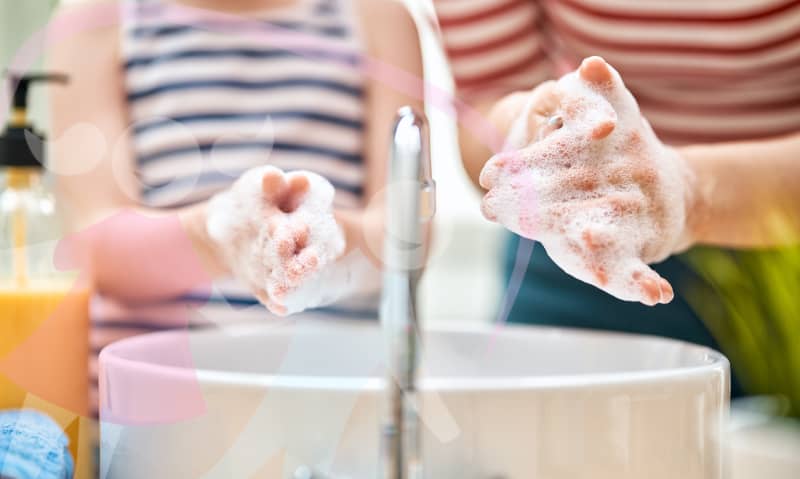Most Common Handwashing Mistakes and How To Fix Them

Common Hand Hygiene Mistakes
When it comes to handwashing, kids and adults alike fall into one of two camps: the ones who reach for the soap first or the ones who turn on the tap first. Both groups of people would probably lay down their lives believing their way is right, but the CDC recommends the latter. Wet skin has a better chance of absorbing soap, which leads to a better lather and a more effective removal of germs. Here are a couple of other common hand hygiene mistakes:
 Using Too Little or Too Much Soap
Using Too Little or Too Much Soap
Soap does a lot more than make your hands smell nice after a trip to the bathroom. It also contains chemicals that remove germs and bacteria. However, using too little or too much soap can be just as damaging as skipping the soap entirely. If you don’t rinse your hands properly after using two or three pumps too many, it can lead to skin irritation. Too little soap and the ingredients won’t be plentiful enough to work their magic on every surface of your hands. Aim to have just enough soap to cover the fronts and backs of your palms, then rinse your hands thoroughly to get all the suds off.
Skipping Nooks and Crannies
If you just rub soap between your palms, rinse, and call it a day, the other nooks and crannies can still harbor harmful bacteria. One of the reasons the CDC recommends washing your hands for 20 seconds is so you have enough time to cover the not-so-obvious regions of your hands. Germs love to hide between fingers, under fingernails, on wrists, and on the backs of your hands. Work up a good lather and scrub these areas vigorously to remove all dirt, grease, and bacteria from your skin.
Always Choosing Sanitizers
There’s a reason hand sanitizers have a “99% of bacteria” label on them: They can’t remove 100% of the germs on your hands. So while they look and smell very effective, hand sanitizers don’t replace handwashing. Only use them when it’s impossible to get to a sink and your hands aren’t visibly dirty or greasy. Otherwise, soap and water is the most effective way to get rid of the microbes.
Touching Other Surfaces Immediately After
Let’s imagine your fingers are cooked sausages. Now once these delicious breakfast treats are ready, do you place them directly on the kitchen counter or on a plate? In the same way, nothing ruins a good handwashing session than touching unsanitized surfaces right after. Switching off taps and then immediately grabbing door handles or handrails contaminates them yet again. So take extra caution not to touch anything once your hands are clean. Switching off the tap with your elbow and covering the door handle of public restrooms with a clean paper before you open it can help your hands stay germ-free a little longer.
Protect your child’s health by booking their dental checkup with Pediatric Dental Specialists.
While we’ve been talking about all the bacteria that stick to your hands, your mouth can also be a place that bad bacteria like to hide in and cause damage. This is why it’s so important to see your dentist every six months for a checkup. If your little one is due for a visit, you can book their appointment via our easy online booking form. We can’t wait to see you!